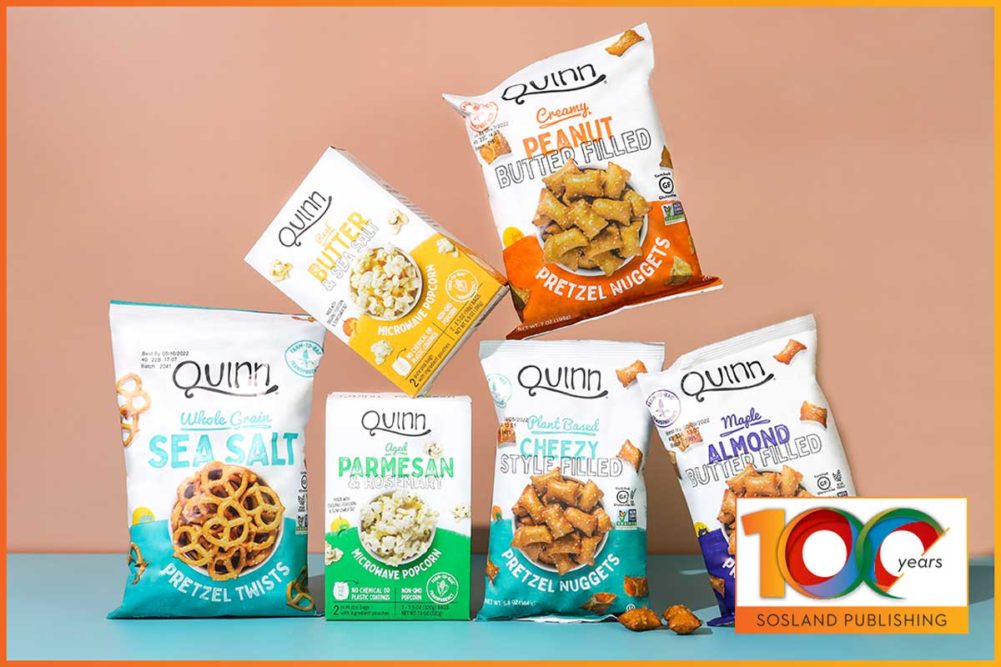When James Herr started his business in 1946, he sold potato chips at a local market in Lancaster, Pa. But that wasn’t the only way he found to get his snacks in the hands of potential customers. He would place free 3-lb tins of chips on doorsteps with a note telling people that if they liked them, they simply needed to return the tin, pay the fee, and another tin would be delivered.
“Back in the 1940s, you didn’t have all these supermarket chains,” said Ed Herr, James Herr’s son and current chairman and chief executive officer of Herr Foods Inc., Nottingham, Pa. “Back then, it was more mom-and-pop stores.”
Things have changed a lot at Herr’s in the 76 years since that humble beginning. Indeed, automation, packaging, distribution, ingredients and so much more — including snackers and their habits — have all had a hand in transforming the snack industry into the vibrant, multifaceted powerhouse it is today. As Sosland Publishing, the parent company of Baking & Snack, celebrates 100 years in business, we are taking a closer look to see what’s gone before and what’s next.
Many automation innovations have been developed for snack makers over the past century, including many pieces of machinery that have only become faster and more efficient through the years. This list includes equipment bagging salty snacks like chips and pretzels.
“The automation that has come in has been fantastic, and the systems and controls have been amazing,” said Barry Levin, CEO of Snak King Corp., City of Industry, Calif. “When I first started, we had volumetric fillers. Then we had bulk and dribble feeders going into a single scale. Today we have combination weighers that are significantly faster and more accurate. The tools we have today are remarkable to help us make good products consistently.”
The equipment has come a long way for pretzels, too, said Justin Spannuth, vice president and chief operating officer at Unique Snacks, Reading, Pa.
“With twisting, braiding, filling, the rate of extrusion back when we were on Montrose Avenue — this was pre-1980 — we had a Unex brand extruder, which extruded two pretzels at a time,” he explained.
That amounted to about 100 pretzels per minute while extruders today can produce several thousand per minute, although Mr. Spannuth said that to ensure quality, Unique Snacks doesn’t operate at maximum speed.
And the industry has changed significantly over the years, said Troy Gunden, president of Herr’s and the third generation to run the family-owned company, which employs 13 family members in a variety of roles.
“For the first 75 years of your publication, there would have been a lot of mom-and-pop businesses and independent snack food companies in each different area producing either potato chips or crackers or any number of things,” he said. “In the ’80s, ’90s and definitely now, it seems like there’s significantly more consolidation.”
Malcolm McAlpine, business manager for branded snacks and confections in foodservice for Mondelez International, Chicago, pointed out that there wasn’t much in the way of packaged snacks outside of retail 100 years ago.
“Over the past 30 years, the variety and pack formats have exploded,” he said. “For example, on Oreo we have probably 20 different pack formats on a regular Oreo. Everything from two-count, four-count, six-count, king size, mini big bags, regular bags, retail family size, 20 oz. What’s really happened is not only has snacking increased dramatically, but also the fact that, particularly in the last 20 years, pack sizes and formats have been developed to fit specific channels.”
This article is an excerpt from the April 2022 issue of Baking & Snack. To read the entire feature on Centennial Report: The Future of Snacking, click here.





